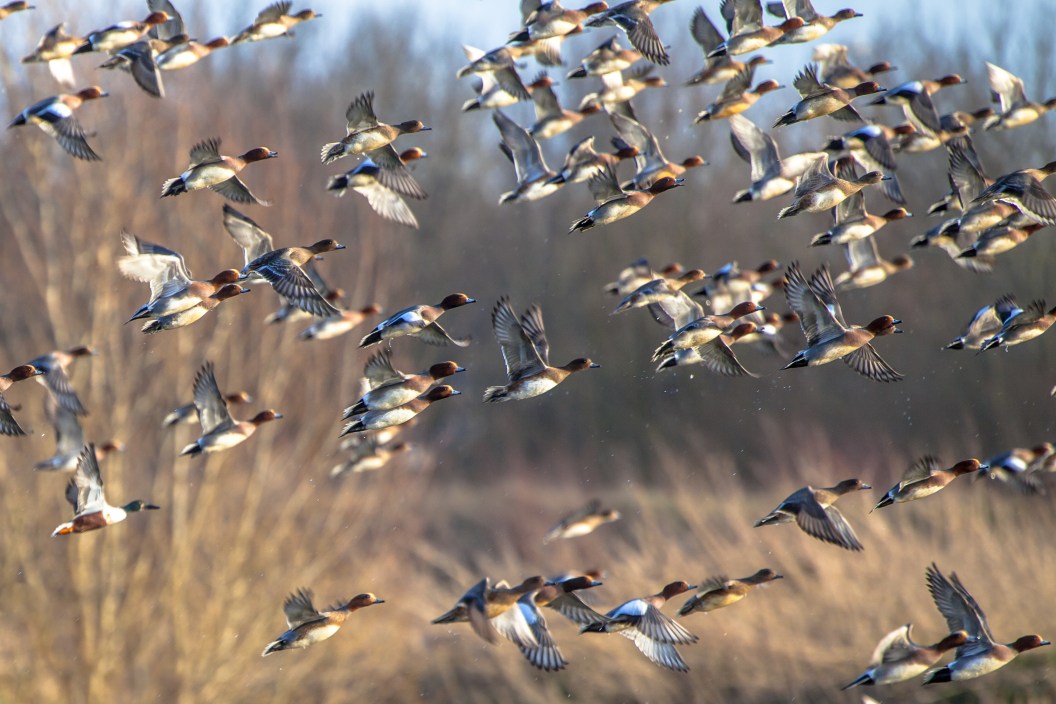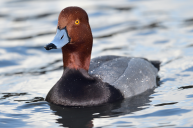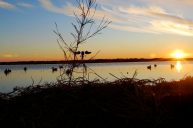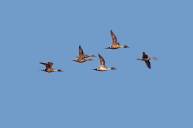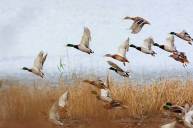On any given day, anywhere in America, could catch a glimpse of a group of ducks in the sky. Ducks come in so many different shapes, sizes, and colors. There's a breed of duck for seemingly every situation. There's the majestic Mallards, Harlequins, and Redheads that turn the sky into a multi-colored kaleidoscope and there's the domestic breeds such as the Pekin ducks, Swedish Blue ducks, and Cayugas bred for duck eggs, pets, as breeders, and for meat production. And there's plenty in between, from rare duck species to more common.
Farmers select their breed of duck for lots of different reasons. A white pekin, for example, is a hearty and heavyweight duck bred for meat production. A Saxony duck, a domestic duck breed originally from Germany, might be preferred for its docile temperament and eggs that taste hit the palate similar to chicken eggs.
American waterfowl hunters choose which breed of duck to hunt for different reasons too. They know that some ducks are plentiful and easy to find while others are more elusive. Some are chosen for their beautiful looks, others for their rich and tasty meat. Others still for their rarity and the challenge they represent. There's a lot of choices for which duck breeds to target while hunting. Let's take a look at ten of the top duck breeds that hunters go after.
1. Wood Ducks
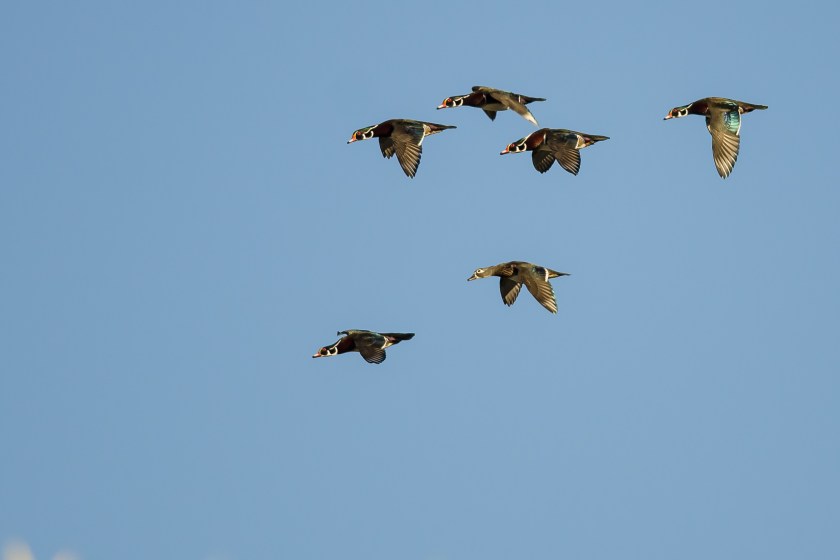
Getty Images, RCKeller
Wood Ducks are an attractive duck breed. These crested ducks are small but gorgeous birds, typically weighing around a pound and a half. Both males and females have distinctive looks. The male has a green crested head with a Chesnut colored chest and white and black markings through its body. The female isn't quite as flashy but still very beautiful with a gray crested head, a white teardrop marking around the eye, and a dark blue speculum patch on the wings. Wood ducks live in areas around most of the United States and are typically found in marshy woodlands. They typically lay between 6 to 15 white eggs per clutch and even lay eggs in each other's nests. Ducklings are a capable of flight around nine weeks after hatching.
This breed of duck makes a distinct whistling noise that even the most novice hunters can identify. Because of their widespread availability and their distinct looks, they are a favorite amongst many waterfowl hunters.
2. Harlequin Duck
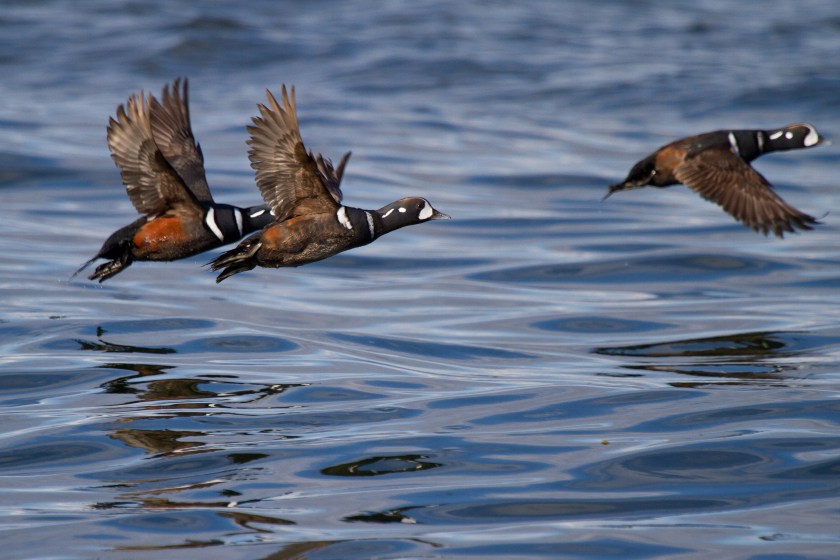
Getty Images, michaelschober
Found from Alaska down to Washington, these cold-weather ducks are unmistakable at a glance. Males have a deep slate blue body hue, adorned by white stripes, crescents and spots on the head, neck and scapulars, while the sides and flanks are chestnut colored. The bill is blue-gray with a pale nail and the legs and feet are grayish.
Unlike most of the ducks on this list, Harlequin are sea ducks. Harlequin ducks dive to feed, and their diet consists of mostly crustaceans, mollusks, insects, small fish and roe found in riverine and marine habitats.
According to Ducks Unlimited, Pacific Harlequins spend the winter in coastal areas from the Aleutian and Pribolof islands south to central California, migrating laterally from interior regions. The Atlantic population winters in coastal areas from Greenland and Iceland south through Newfoundland, Nova Scotia and down to Maryland.
Hunting Harlequin is an entirely different experience than your typical duck hunt. The Alaska state bag limit for nonresidents is four Harlequin per year. You're not going to fill a freezer hunting them, but you will be sure to make memories you'll never forget. There's also a domestic version of this duck, called a Welsh Harlequin duck.
3. Mallards
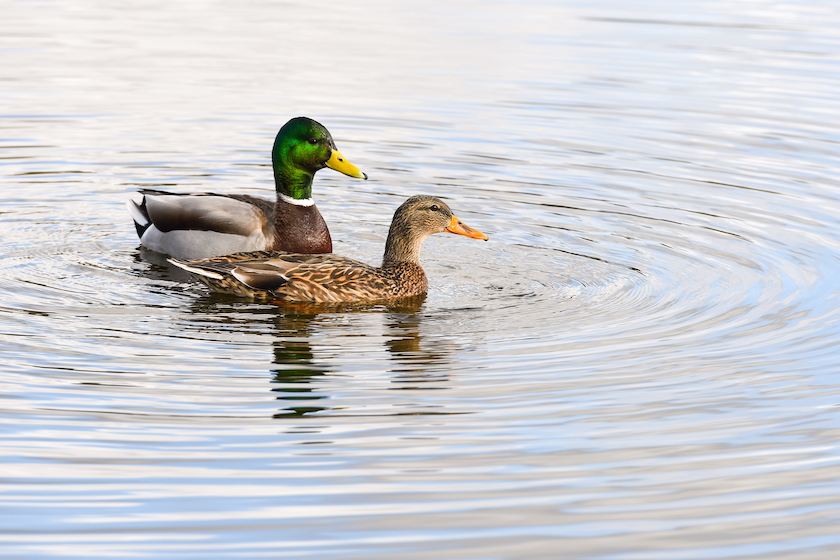
4nadia via Getty Images
If you were to ask a random person on the street to describe what a duck looks like, the features they will most likely point out are orange webbed feet, a yellow bill, and a green head. This is because the most common wild duck in America is the Mallard. With their iridescent green heads and distinct quack, wild mallards are hard to misidentify.
Mallards continue to be an American hunting staple, with over 2.9 million harvested in a typical hunting season, the most out of all species of ducks in the country. They can be found all around the U.S., depending on the time of year, but if you want the most action out of a Mallard hunt, Arkansas harvests record numbers of Mallards year in and year out.
4. Green-Winged Teal
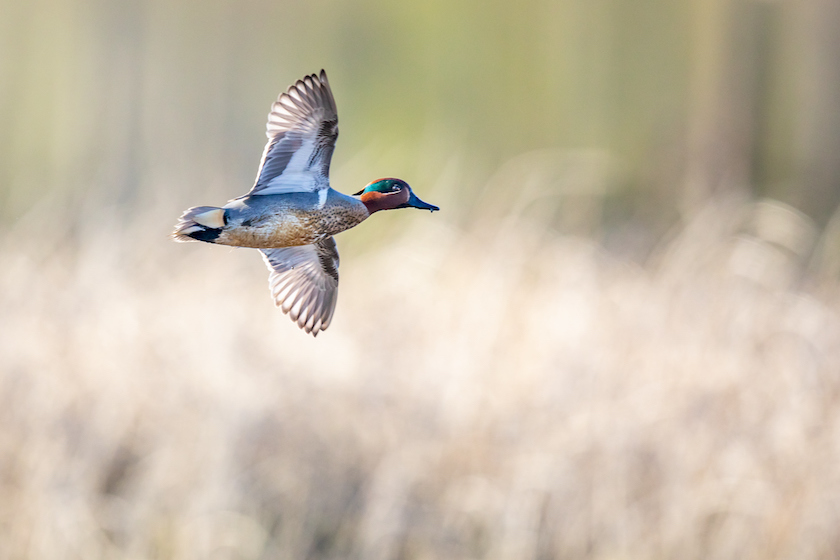
Jeff Huth via Getty Images
"Here and Gone" is the motto for the Green-Winged Teal. Unlike most other ducks, they don't fly high and circle overhead as they come in. Instead, these small ducks fly low and come in fast. Speaking of small, they have an average length of just over 14 inches and an average weight of just over half a pound. This makes Green-Winged Teal the smallest puddle duck in America.
They are easily recognized in the air by their small size and brown head with a green stripe running on either side of their head. Of course, the most noticeable feature is their namesake, the green feathers on the back half of their wings, which are called wing patches (or "specula"). While these ducks will breed in Canada and the northern Midwest, they wander all across the southern United States and down to Mexico.
5. Cinnamon Teal
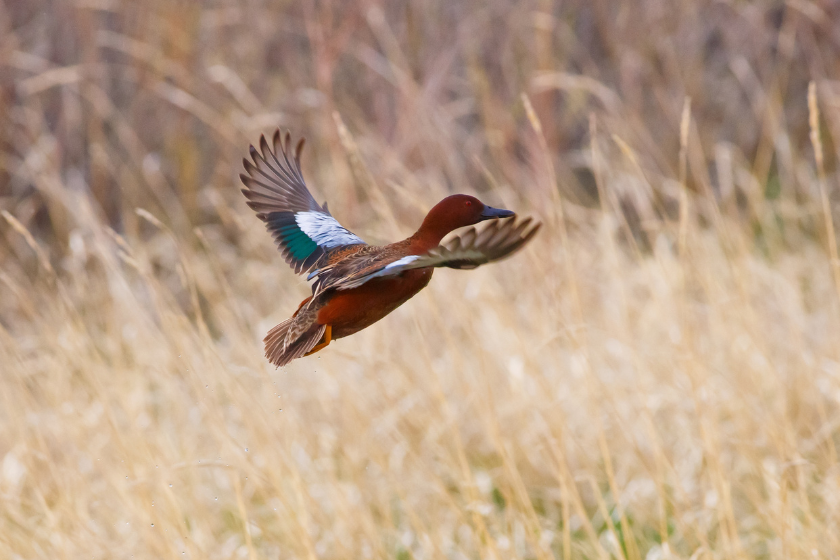
Jason Erickson via Getty Images
The next duck on our list is the Cinnamon Teal, another one that is unmistakable from any other species. The drakes have a red body, head, and neck, broken only by a blue patch on the shoulder and a white stripe on the wing. However, the hens are a duller brown color. Cinnamon Teal is found in the western parts of the United States and will breed near the Great Salt Lake and California. They will winter in southern Texas and Arizona, all the way to southern Mexico. It's no wonder why they're one of the most popular duck species in North America.
6. Canvasback
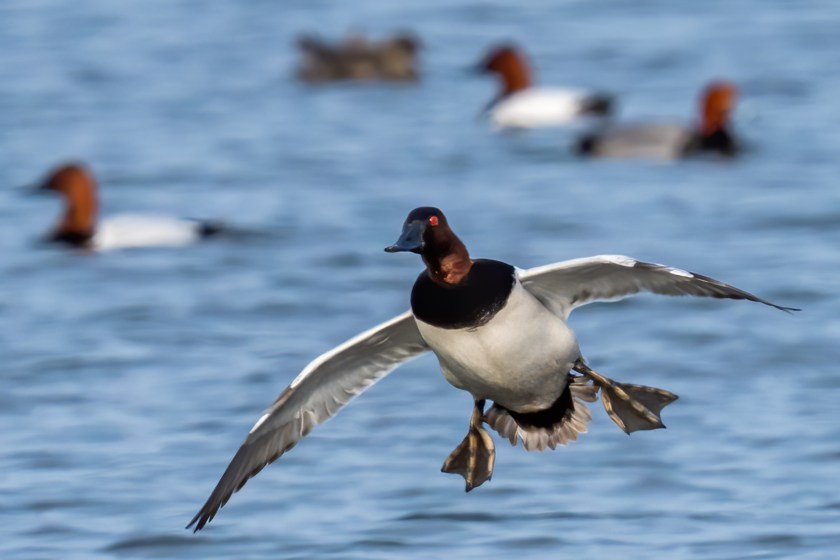
Getty Images, William Krumpelman
Canvasbacks are a favorite among American duck hunters for their large size, beautiful appearance, and great-tasting meat. Male canvasbacks are described as having a chestnut-red head and neck, a black breast, grayish back, black rump and blackish-brown tail, with white feathers on the sides, flank and belly. The wing coverts are grayish and vermiculated with black. Female canvasbacks have a light brown head and neck, grading into a darker brown chest and foreback. The sides, flanks and back are grayish-brown. For both sexes, the bill is typically black and the legs and feet are bluish-gray.
The Canvasback is America's largest diving duck, weighing 3.5 pounds or more and having a wingspan almost 3 feet across.
Hunters can often find Canvasbacks in rafts of 1,000 or more, so hunting them is about putting out a large enough spread to attract their attention.
8. Redheads
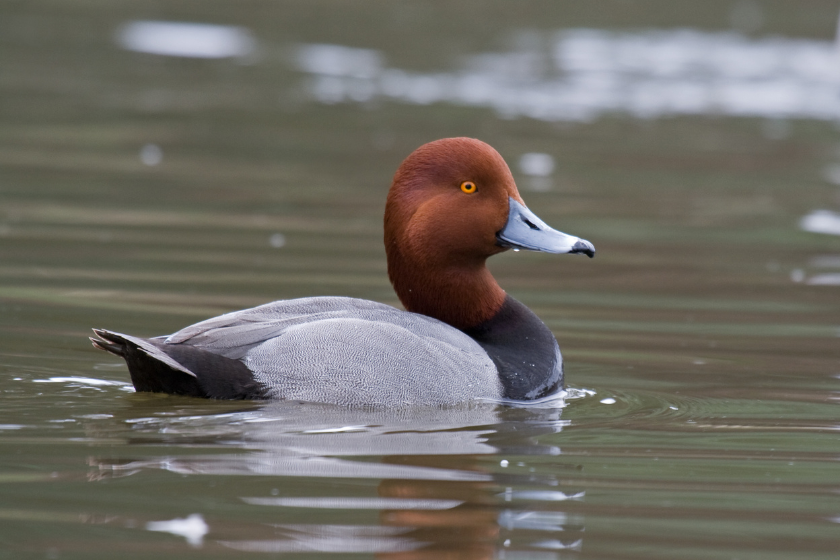
Getty Images, Greg Gillson
Aptly named for their unmistakable red head, redhead ducks are fast-flying, beautiful diving ducks. Since they are both feeders, it's pretty common to hunt for Canvasbacks and have Redheads fly into a spread, and vice versa. Redheads can be found all around the country and prefer to nest in non-forested environments with water areas sufficiently deep to provide permanent and fairly dense emergent vegetation. They are robust breeders and females lay an average of 7-10 eggs per clutch. This breed of duck are aggressive egg layers and are notorious for parasitizing nearby canvasback nests.
A significant Redhead migration corridor extends from southwestern Manitoba and southeastern Idaho to the Gulf Coast. It is estimated that 80 percent of the North American redhead population winters in the Laguna Madre of Texas and Mexico.
7. Gadwalls
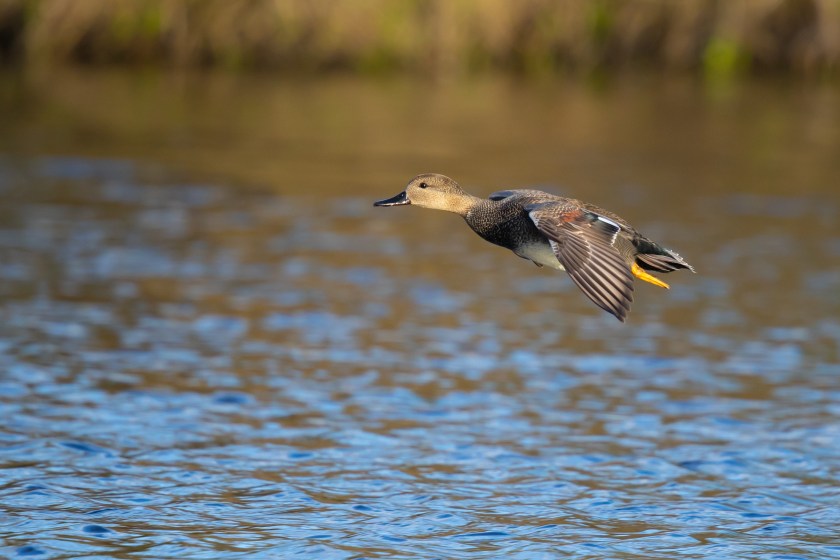
Getty Images, Jeff Huth
While Gadwalls might not be the prettiest duck on this list, they are prevalent throughout the southern United States, especially during the winter. Remember their laid-back demeanor when setting up for Gadwalls compared to other, more aggressive species. Because of this, it's essential to stage more of a relaxed and refugee-like decoy spread with minimal movement. Most Gadwalls winter in Louisiana, but they can also be found in many other southern states.
6. American Black Ducks
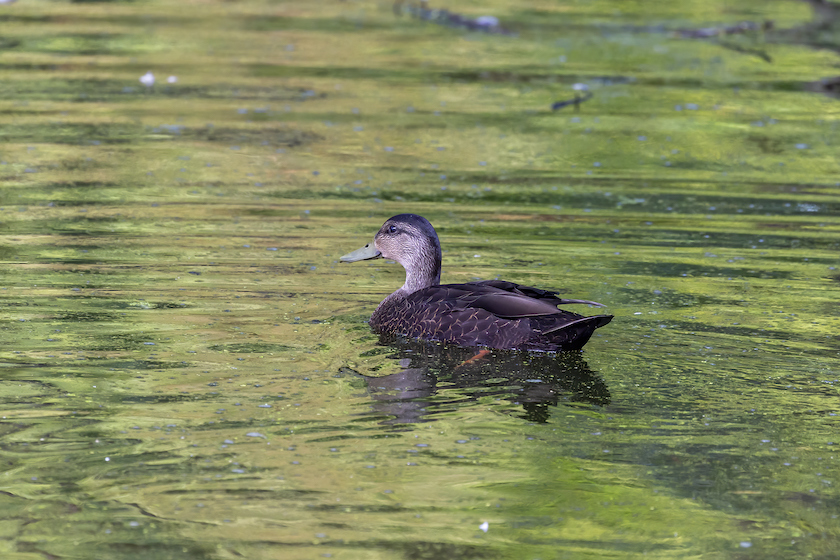
Karel Bock via Getty Images
The Black Duck is similar in size and color to a female Mallard but slightly darker and has no white on its wing plumage. The males and females look very similar, with one of the key differences being that the male's bill is yellow and the female's bill is a dull green color. Harvest numbers are around the 115,000 mark yearly, so they are challenging to find and hunt. Any hunter with a black duck (one of the most popular duck species in North America) on their wall should be incredibly proud.
You can find black ducks all along the eastern half of the United States, breeding in Maine and Canada and wintering as far south as northern Florida. Look no further than Maryland for the best black duck hunting.
5. Northern Pintails
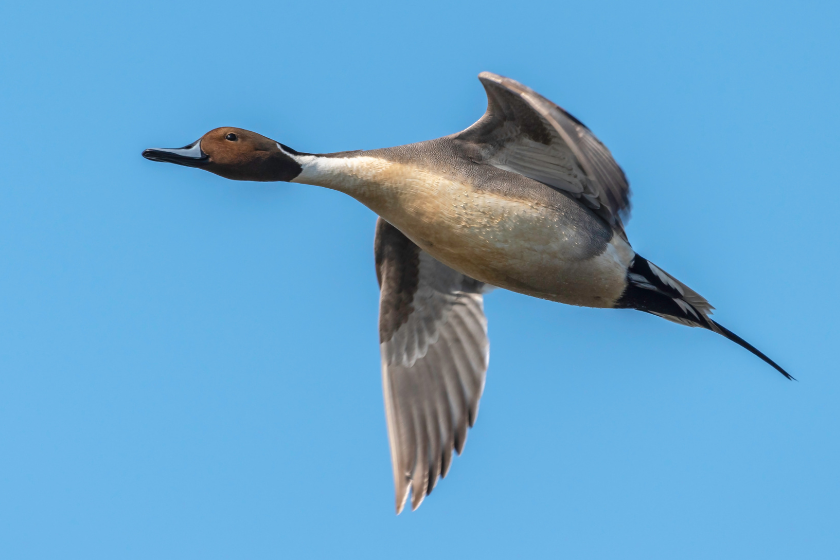
Supercaliphotolistic via Getty Images
The Northern Pintail is probably one of the most numerous duck species in the world and can be found across North America, Europe, and Asia, outnumbered probably only by the wild mallard.
Slim and long-necked, with narrow wings and long tail feathers, it has an elegant appearance both on the water and in flight. Its quack is a distinct whistle call, and while the quacks are different, hunters will often hunt both Mallards and Pintails at the same time. Both duck breeds can often be found in the same conditions.
Pintails breed in the north-central United States and Canada. They can be found in southern states like Texas and Louisiana during the winter. While both states are good, California is the best state to hunt Pintails. They dominated Pintail harvests with over 102,000 in the 2020-21 season.
